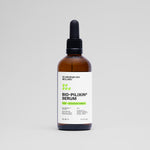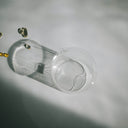Hair loss can be frustrating, confusing, and sometimes even scary. But here’s the good news—you don’t have to figure it out alone.
A hair loss consultation with a doctor or specialist can give you real answers about why it’s happening and what you can do about it.
Whether your hair is thinning, shedding in clumps, or showing bald patches, getting expert advice early can make a big difference.
Table of content
Why you should consider a hair loss consultation
If your hair is falling out more than usual, you might be wondering if it’s time to see a specialist. The short answer? Yes. The sooner you understand what’s causing your hair loss, the better your chances of slowing it down—or even reversing it.
Here’s when booking a consultation is a good idea:
- Your hair loss is sudden or excessive. A little shedding is normal, but if you’re losing more hair than usual or noticing bald patches, there could be an underlying issue.
- You have a family history of hair loss. If thinning hair runs in your family, a specialist can help you explore ways to manage or slow it down.
- Your hairline is receding or thinning at the crown. These are common signs of genetic hair loss, but there are treatments that can help.
- You’re dealing with stress, illness, or hormonal changes. Pregnancy, menopause, thyroid issues, and even extreme stress can trigger hair loss. A consultation can help pinpoint the cause.
- Your scalp feels irritated. If you have itching, burning, or flaking along with hair loss, a doctor can check for conditions like scalp infections or psoriasis.
As your leading source for hair health information over the past 4 years, we never compromise on accuracy. When it comes to your health, you deserve information you can truly rely on - and earning your trust is our top priority.
Here's how Scandinavian Biolabs ensures every piece of content meets the highest standards of accuracy and integrity:
- Credentialed Experts: Our reviewers are actively practicing doctors and medical researchers
- Stringent Reviews: Content undergoes rigorous editing by subject specialists and review by a practicing doctor.
- Evidence-Based: We rely on well-established research from trusted scientific sources like peer-reviewed journals and health authorities.
- Full Transparency: Our editorial standards, writer credentials, reviewer credentials, correction process, and funding are all publicly documented.
- Independent Voice: While we do promote products, we operate in a vacuum to business operations. Our main goal is just an unwavering commitment to providing medically-sound guidance.
You can count on Scandinavian Biolabs to consistently deliver the trustworthy health information you deserve. Read our Editorial Standards.
What to expect during a hair loss consultation
Here's what to expect when you visit a hair loss specialist:
- A scalp and hair examination to check for signs of damage or thinning.
- A review of your medical history, lifestyle, and diet.
- Possible tests, like blood work or a scalp biopsy, to find the root cause.
- A discussion about your treatment options and what results you can expect.
Now, let’s break that down in detail.
Physical examination
Your doctor will take a close look at your scalp, hair, and even your nails. Why nails? Because changes in them can sometimes hint at underlying conditions affecting hair growth.
The specialist may check for redness, scaling, or unusual patterns of shedding. If you have patchy hair loss, they’ll look for signs of conditions like alopecia areata.
They might also gently pull on a small section of your hair to see how much comes out—this helps assess shedding levels. It’s nothing to worry about and doesn’t hurt, but it can give useful clues about what’s happening beneath the surface.
Medical history review
Expect some questions about your overall health, stress levels, and lifestyle. Your doctor may ask:
- When did you first notice the hair loss?
- Has it gotten worse over time?
- Do you have any other symptoms, like fatigue or weight changes?
- What does your diet look like?
- Do you have a history of hair loss in your family?
They’ll also ask about any medications or supplements you’re taking, as some of them can trigger hair shedding.
Even everyday things—like how often you style your hair or if you’ve been under a lot of stress lately—can play a role.
Diagnostic tests
Not all hair loss cases require testing, but in some situations, your doctor might suggest one of the following:
- Blood tests. These check for thyroid issues, iron deficiency, hormone imbalances, and other conditions that could be affecting your hair.
- Scalp biopsy. If needed, a tiny sample of scalp tissue is taken and examined under a microscope. This helps rule out conditions like scarring alopecia.
- Light microscopy. A close-up look at hair samples can reveal abnormalities in the hair shaft that could explain the shedding.
Discussion of findings
Once your doctor gathers enough information, they’ll explain what’s likely causing your hair loss. Some conditions, like telogen effluvium (stress-related shedding), may resolve on their own. Others, like male or female pattern baldness, may require long-term treatment.
You’ll also discuss treatment options, which could include medications, lifestyle changes, or even surgical procedures like a hair transplant.
This is your time to ask any questions and make sure you understand your next steps.
Questions to ask your trichologist or dermatologist

Walking into a consultation without knowing what to ask can leave you feeling unprepared. To get the most out of your appointment, have a few key questions in mind. The more you understand your condition, the better decisions you can make about treatment.
What is likely causing my hair loss?
Hair loss doesn’t just happen without a reason. Your specialist will examine your scalp, ask about your health, and possibly run tests to pinpoint the cause.
It could be genetic, stress-related, hormonal, or even triggered by nutritional deficiencies. Understanding the root cause is the first step toward finding the right solution.
Is my condition temporary or long-term?
Some types of hair loss, like telogen effluvium (caused by stress or illness), are temporary and may reverse on their own. Others, like androgenetic alopecia (pattern baldness), are more permanent and require ongoing management.
Your doctor can help you set realistic expectations about what to expect moving forward.
Is there a chance my hair will grow back naturally?
For some people, hair regrowth happens without treatment, especially if the cause was temporary—like pregnancy-related shedding or nutritional imbalances.
But if your hair loss is due to genetics or certain medical conditions, you may need treatments to slow it down or encourage regrowth.
Are there any lifestyle changes that could help?
Diet, stress, and even how you style your hair can play a role in hair loss. If you’re dealing with excessive shedding, your doctor might suggest eating more protein, getting enough iron, or using gentle hair care products.
Small changes can sometimes make a big difference.
What treatment options do you recommend?
Not every type of hair loss needs the same treatment. Some people benefit from medications like minoxidil, while others may need laser therapy or even surgery.
Ask your doctor about all the options available and which ones would work best for your situation.
Do I need a hair transplant?
Hair transplants aren’t for everyone. If your hair loss is still progressing, surgery might not be the right choice just yet. Your specialist can tell you whether a transplant is an option or if you should try other treatments first.
What results should I expect from treatment?
No treatment works overnight, and some people respond better than others. Ask your doctor about the timeline for seeing results and what kind of improvement you can realistically expect.
What aftercare or follow-ups will I need?
Certain treatments require maintenance, whether it’s continued medication use or follow-up appointments. Make sure you know what’s involved in keeping your hair healthy after treatment starts.
How to prepare for your hair loss consultation
Showing up prepared can help your doctor get a clearer picture of what’s happening with your hair. Here are a few things you can do before your appointment:
- Write down your hair loss history. Think about when you first noticed the shedding, how it has changed over time, and whether you’ve seen any patterns. Bringing photos can also help your doctor track changes.
- List your medications and supplements. Some medications, including birth control pills, antidepressants, and even certain vitamins, can contribute to hair loss. Have a list ready, including any herbal supplements you take.
- Take note of any recent health changes. Have you been sick? Stressed? Experienced weight loss or hormonal shifts? These details can help your doctor identify potential triggers.
- Avoid styling products before your visit. Skip gels, sprays, or heavy conditioners so your doctor can properly examine your scalp. It’s also best not to wash your hair right before the appointment.
- Be ready to discuss family history. If hair loss runs in your family, mention it. Genetics play a big role in conditions like pattern baldness.
Treatment options discussed during the consultation
Once your doctor identifies the cause of your hair loss, they’ll talk to you about treatment options. Some people need a combination of treatments, while others might just need time for their hair to recover naturally.
Medications
For many types of hair loss, medications are the first line of treatment. The most common ones include:
- Minoxidil (Rogaine): This over-the-counter topical treatment helps stimulate hair growth and slow down hair loss. It works for both men and women, but it takes several months to see results.
- Finasteride (Propecia): This prescription pill is mainly for men with androgenetic alopecia. It works by blocking the hormone that causes hair loss, but results can take a few months.
- Spironolactone: Often prescribed to women with hormonal hair loss, this medication helps reduce the effects of androgens (male hormones) that contribute to thinning hair.
Lifestyle and dietary changes
Your doctor might recommend small changes that can improve hair health, such as:
- Eating more protein and iron-rich foods to support hair growth.
- Reducing stress through activities like meditation, exercise, or better sleep habits.
- Switching to gentle hair care products to avoid further damage.
Topical treatments and scalp care
Some clinics offer prescription-strength topical treatments or serums designed to nourish hair follicles and improve growth.
Scalp massages, microneedling, and platelet-rich plasma (PRP) therapy are also options for stimulating hair regrowth.
Low-level laser therapy (LLLT)
Laser therapy uses light to stimulate hair follicles and improve hair thickness. It’s painless and can be done at home with handheld laser devices or in a clinic.
While results vary, some people see noticeable improvements after a few months of consistent use.
Hair transplant surgery
If you have permanent hair loss and other treatments haven’t worked, a hair transplant might be an option. There are two main types:
- FUE (Follicular Unit Extraction): Individual hair follicles are taken from the back of the scalp and implanted into thinning areas.
- FUT (Follicular Unit Transplantation): A strip of scalp with healthy hair is removed, and the follicles are transplanted.
Both procedures require downtime and take months to show full results, but they offer a permanent solution for people with advanced hair loss.
When to seek immediate medical attention
If your hair loss is sudden, severe, or comes with pain, itching, or skin changes, see a doctor right away. It could be a sign of an underlying health condition that needs urgent attention.
Patchy hair loss might indicate an autoimmune disorder like alopecia areata, while scalp redness, swelling, or sores could signal an infection that may cause permanent damage if untreated.
Excessive shedding after an illness, drastic weight loss, or hormonal shifts should also be evaluated to determine if it’s temporary or more serious.
Hair loss paired with fatigue, muscle weakness, or unexplained weight changes may point to thyroid issues or nutrient deficiencies. If something feels off, don’t wait—getting checked early can help prevent further complications.
A holistic approach to your overall hair health

While medical treatments and lifestyle changes play a big role in managing hair loss, some people also turn to scientifically developed hair care products for extra support.
One such option is Bio-Pilixin® Activation Serum, which has been formulated to help reduce hair loss and support hair growth.
Developed by experts, this serum contains plant-based growth factors designed to nourish hair follicles. It has been tested in a clinical study, where 93% of participants reported a reduction in hair loss after 150 days of use.
Some users noticed less shedding within the first few weeks, particularly when washing their hair.
The formula includes ingredients like Capilia Longa®, a natural compound studied for its potential to reduce hair loss and improve hair density, and niacinamide, which may help strengthen hair by supporting keratin production.
Another key ingredient, Vanillyl Butyl Ether, provides a mild warming effect that can stimulate blood flow to the scalp, potentially enhancing nutrient delivery.
While results vary from person to person, Bio-Pilixin® Activation Serum is drug-free and made with naturally inspired ingredients, making it a gentle addition to a well-rounded hair care routine.
If you’re exploring ways to support your hair health, this could be worth considering.
Conclusion
Hair loss can be stressful, but understanding its cause is the first step toward finding the right solution. A consultation with a specialist can provide clarity on whether your hair loss is temporary or long-term and what treatment options might work for you.
From medical treatments and lifestyle adjustments to specialized hair care products, there are plenty of ways to support hair health.
If your hair loss is sudden, severe, or linked to other health issues, don’t hesitate to seek medical advice. The sooner you address the problem, the better your chances of managing it effectively.
Hair care isn’t just about regrowth—it’s about maintaining the health of the hair you have. Whether through medical treatments, nutrition, or gentle scalp care, every small step can make a difference.
References:
- https://pmc.ncbi.nlm.nih.gov/articles/PMC10750333/
- https://pubmed.ncbi.nlm.nih.gov/12196747/
- https://www.jaad.org/article/S0190-9622(03)03692-2/fulltext
- https://pmc.ncbi.nlm.nih.gov/articles/PMC6691938/
- https://pubmed.ncbi.nlm.nih.gov/9777765/
- https://pubmed.ncbi.nlm.nih.gov/9951956/
- https://pmc.ncbi.nlm.nih.gov/articles/PMC3944668/





